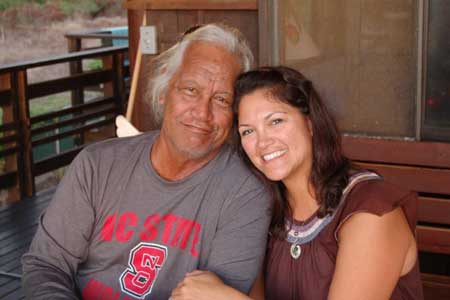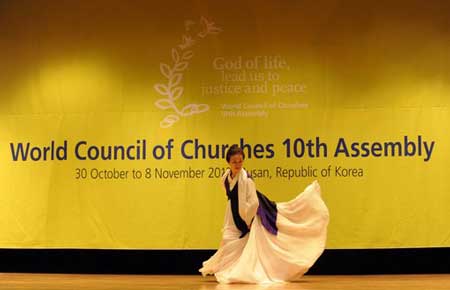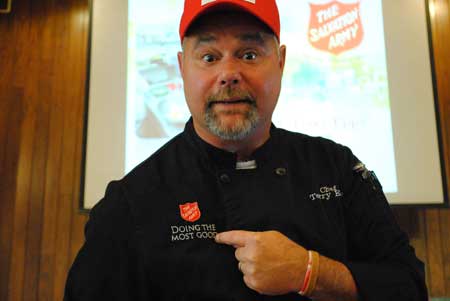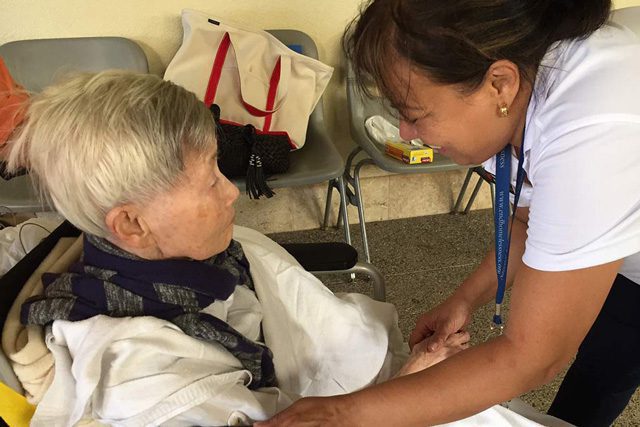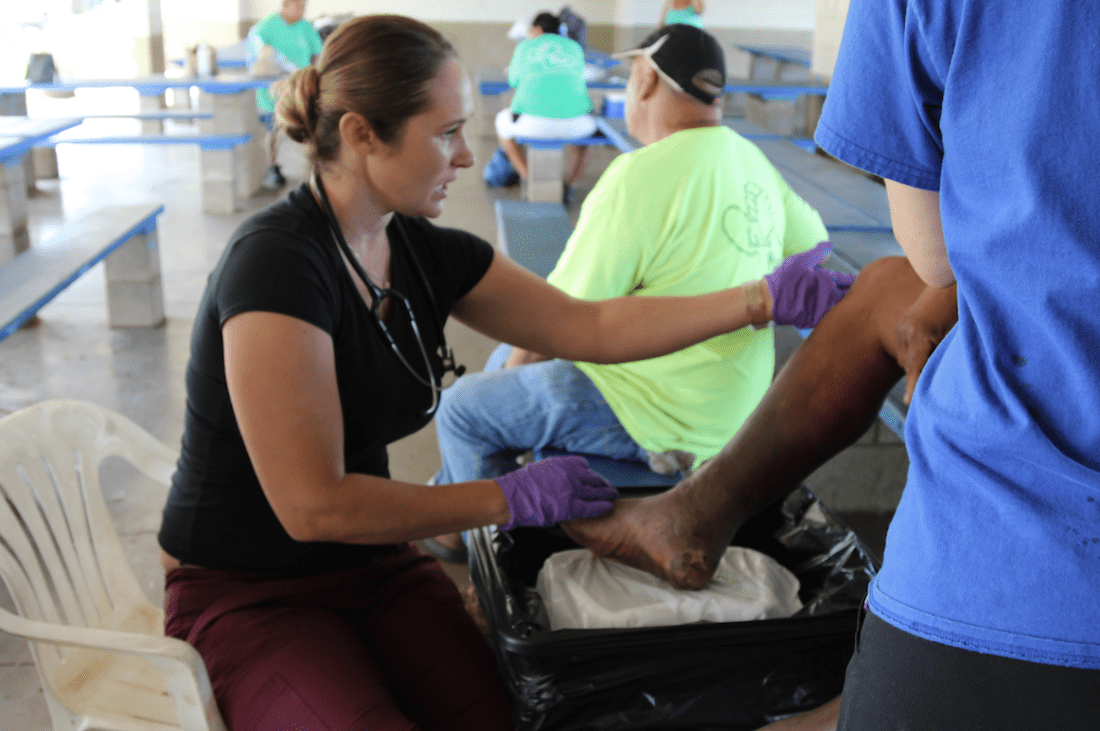Listen to this article
Listen to this article
Loading
Play
Pause
Options
0:00
-:--
1x
Playback Speed- 0.5
- 0.6
- 0.7
- 0.8
- 0.9
- 1
- 1.1
- 1.2
- 1.3
- 1.5
- 2
Audio Language
- English
- French
- German
- Italian
- Spanish
Open text
missing persons reunion. by illyse lane. two years ago, when tanya sloan’s flight landed in oahu, hawaii, she couldn’t get off the airplane fast enough. after all, she knew what was waiting for her on the other end of the jetway. but for you to understand her eagerness, you have to understand her journey. a journey that began in oahu on oct. 30, 1968. it was on that day that sloan was born. and it was four days after that when her adoptive family came to take her home. shortly after, sloan and her family relocated to jacksonville, n.c., where she had the typical childhood, with her adoption never discussed. it was only by accident that she discovered she was adopted; a discovery she made when she was 19 years old after finding her decree of adoption in her mother’s bureau. “it was a different era,” sloan said. “my parents never wanted me to know. they wanted me to feel that i was theirs.”. and she did feel as though she belonged. “i was happy, with a great family, and i felt loved,” she said. and none of that changed when she found out that she was adopted. however, even with that sense of belonging, sloan couldn’t deny that finding out she was adopted helped to ease a small nagging in her mind; something that she had never been able to put her finger on. “i always felt a little bit different. maybe it was an intuitive thing. but i was always curious,” she recalled. “i’d look at my parents, and while i looked like them—my father was samoan and my mother caucasian—i didn’t really see myself in them.” so, while she was surprised by the news, it did confirm what she has always felt, curing her curiosity. and at the time as a young college student, she was content. but in 1996, nearly seven years after that fateful discovery and three years after marrying her husband, scott, sloan started to wonder about her past. “we began talking about having children and i realized i didn’t known anything about where i came from. for example, i really didn’t know if i had heart disease in my family. they ask you these things when you go to the doctor. they would ask and i wouldn’t know,” she said. it was at that moment sloan decided to look for her birth mother. “my mom wasn’t 100 percent supportive and she gave me all the info she had, which wasn’t much.” and while her adoption files were sealed, there was a procedure in place that allowed child and family services to contact the last known address on file. the search was set in motion and she patiently waited, hoping for a reunion. finally, almost a year later, there was news. her birth mother had been located, but she did not want contact. “of course, i was devastated,” sloan said. “but i went through the emotions, and i got over it. that’s how i am.”. accepting the outcome, she and scott put their energy into building their own family, welcoming daughter mackinley in 1998 and son matthew in 2000. but as a young mother, it was difficult for her to deny the tiny tinge in her heart and the voice inside her head. “within that time i had read lots of books, such as ‘the girls who went away,’ i had children of my own, and i understood even more what my birth mother must have gone through,” she said. with a fresh perspective, she decided to reach out to her birth mother for the second time, hoping for a different response. but once again, she had no interest in connecting. “it did bother me, but i knew i had to let this go,” she said. and so she did until 2009, when she lost her mother. “tanya had already lost her dad and her brother, and i think it really got to her when her mom passed away. i think there was a part of her that felt alone, like she was on an island and didn’t have a family,” husband scott said. with the help of a close cousin, sloan decided to contact her birth mother yet again. she also decided that this time she’d take a slightly different approach. instead of going through child and family services, she researched homes for unwed mothers that were open in oahu around the time she was born. she found one in particular that seemed to be a match. while the home had been long closed, she was able to to reach out to the salvation army, the organization that had run the home during that time. she was assigned caseworker lois sellars who, using her birth mother’s file, was able to guide tanya in a much more personal manner. “during my last searches, a form letter was sent to my mother. with lois, i was able to write a more meaningful letter,” sloan said. “i was able to tell her that i didn’t want to disrupt her life; that i understood and i was grateful for the life she had given me. i just wanted her to know how i was feeling. and that i was okay with things.”. the letter resulted in an almost immediate response from sloan’s biological mother. “she contacted lois. she was very curious about me. she was excited about the life i had. she wanted to know just what any parent would want to know,” sloan said. but even with all the interest, her birth mother still wasn’t open to a meeting, or sharing any information about herself. it was the closest they had come to a reunion; therefore, it also took the hardest emotional toll, forcing sloan to realize she may never get the answers to the questions she has about her past. “there was still this piece of me that was missing, but i knew that i had to just accept that i was not going to know where i came from. but i knew god’s plan for it was to unfold in the way it did; it was the way it was meant to be.”. in the spring of 2011, she emailed sellars stating that she would not seek contact with her birth mother again. something within sellars responded to the tone and finality of sloan’s note and she was suddenly struck with an idea-finding sloan’s birth father. “i had some information on tanya’s birth father based on notes her birth mother made about what she was feeling and her situation when she was in the home,” sellars said. it was information that had not been in sloan’s file at child and family services and it could have been just what they needed to make a connection. while normally sellars would have waited for the child to propose reaching out to find either birth parent, she knew that if she didn’t suggest it the opportunity to find tanya’s birth father could be lost. and she also knew that the birth father’s hawaiian ancestry could work in her favor. “i just had an inkling that the cultural differences between the mainland and the island might play a positive part in her birth father being receptive,” sellars said. “they are much more family oriented with regards to the extended family—it’s not so much about the nuclear family as it is here on the mainland.”. tanya immediately agreed to the search. sellars sent a letter to the last known address on file, but a month later there was still no response. in a last ditch effort, she and tanya decided to send one more letter, this time including photos of sloan. and once her birth father’s family took a look at that photo, they could not deny that tanya was a part of their family. yet even with strong family resemblance, sloan’s birth father’s niece—her first cousin, desiree— wanted to speak with her before disclosing her birth father’s name. and she understood. “desiree had questions. also, apparently my birth father was a big deal in hawaii. he was a surfing champion and his father was one of the original beach boys of waikiki beach,” sloan said. “but the whole time, i knew it was right.”. and by the end of their two-hour conversation, desiree felt the same way. fifteen years after beginning her search, it appeared sloan was closer than ever to a reunion. it was just going to happen with a different parent than she originally anticipated. “the crazy thing is that scott said in the very beginning you should just look for your birth father. every time i was disappointed, he would say that i needed to find my father. i just didn’t know that i could,” sloan said. a few days after that first conversation, the sloans huddled in front of their home computer, getting ready to skype with desiree and the man she now knew as blue makue jr.; the man she now knew with absolute certainty was her birth father. this would be the first time sloan and makue would see each other face to face. “i was never nervous because i knew in my heart and my gut that this was meant to be. it was everything i had been waiting for,” sloan said. not quite technically savvy, makue was only expecting to see photos of sloan and the family on the computer. when he saw sloan live on the monitor, it was almost more than he could take. “in walked this charismatic man, and he said, ‘aloha, my daughter.’ i am just staring at him, we’re just staring at each other, and i can see myself. we both just knew,” sloan said. the chat didn’t last long; a few minutes into the call, makue excused himself. desiree later shared that makue had gone into the other room and cried; that he had always wanted children but he and his wife, marie, had not been able to have them; and that he had wished he’d known that tanya had been born. three months later in december 2011 sloan and her family boarded a flight from raleigh to oahu. when the plane finally landed on the island, scott looked at his wife and asked her what she was feeling. “i told him i couldn’t wait. i equate it to how i felt when i went skydiving. some people got nervous before they jumped. i was dragging that guy out of the plane, saying ‘let’s go, i can’t wait.’ getting off that plane, i felt no anxiety, just excitement,” sloan said. she made it off the plane and headed down to baggage claim, searching one final time for her birth father. then she spotted him. “we looked at each other, we hugged and it was like i had known him my whole life. it was as if i had moved away for a while and i had come back home. that’s how strong the connection was. and he felt the same way,” she said. sloan did more that find her birth father on that trip. in the true aloha spirit, she discovered an extended family with hundreds of cousins ready to embrace her, scott, mackinley and matthew as if they had always been part of each other’s lives. it began the minute they pulled up to the house, as a traditional luau was held in their honor, and continued as they got to know the island from makue’s perspective. “everywhere makue took us, he would say, ‘come here, i want you to meet my daughter and my grandchildren.’ he was just so happy and so proud, you could see it in his eyes,” scott said. “everyone was so happy for him.”. and for sloan, hearing her aunts and uncles say that she was one of them was a gift that far surpassed anything she had hoped for. “when i was leaving, i said to my uncle hono, makue’s brother, that this was a happy ending. he said that it was a happy beginning, that they would always be there for me, that we were family,” she said. exchanges such as this made it quite difficult for her to board the return flight home. “i always felt innately that hawaii was where i was meant to be, but i didn’t know why. i knew i was born there and i had been to hawaii many times with scott over the years. but i had no idea how close i was to my family when i was there. i had walked on waikiki beach, right past makue’s waikiki beach services stand. i had eaten at duke’s, a restaurant on the beach with pictures of surfers covering the walls. i would stare at those pictures,” sloan said. “now i know why. i now know some of those picture are my family—blue, my grandfather and my uncle.”. this new-found family has become an integral part of the sloans’ lives, as the four returned to hawaii this past summer. and while tanya knows that there will be even more trips planned, her ultimate goal is to eventually end up there; to live in a place surrounded by her family. it’s not in her immediate future, but she’s content knowing that if will happen in due time. after all, she knows better than anyone else that some things are worth the wait.
Open context player
Close context player
Plays:-Audio plays count
missing persons reunion. by illyse lane. two years ago, when tanya sloan’s flight landed in oahu, hawaii, she couldn’t get off the airplane fast enough. after all, she knew what was waiting for her on the other end of the jetway. but for you to understand her eagerness, you have to understand her journey. a journey that began in oahu on oct. 30, 1968. it was on that day that sloan was born. and it was four days after that when her adoptive family came to take her home. shortly after, sloan and her family relocated to jacksonville, n.c., where she had the typical childhood, with her adoption never discussed. it was only by accident that she discovered she was adopted; a discovery she made when she was 19 years old after finding her decree of adoption in her mother’s bureau. “it was a different era,” sloan said. “my parents never wanted me to know. they wanted me to feel that i was theirs.”. and she did feel as though she belonged. “i was happy, with a great family, and i felt loved,” she said. and none of that changed when she found out that she was adopted. however, even with that sense of belonging, sloan couldn’t deny that finding out she was adopted helped to ease a small nagging in her mind; something that she had never been able to put her finger on. “i always felt a little bit different. maybe it was an intuitive thing. but i was always curious,” she recalled. “i’d look at my parents, and while i looked like them—my father was samoan and my mother caucasian—i didn’t really see myself in them.” so, while she was surprised by the news, it did confirm what she has always felt, curing her curiosity. and at the time as a young college student, she was content. but in 1996, nearly seven years after that fateful discovery and three years after marrying her husband, scott, sloan started to wonder about her past. “we began talking about having children and i realized i didn’t known anything about where i came from. for example, i really didn’t know if i had heart disease in my family. they ask you these things when you go to the doctor. they would ask and i wouldn’t know,” she said. it was at that moment sloan decided to look for her birth mother. “my mom wasn’t 100 percent supportive and she gave me all the info she had, which wasn’t much.” and while her adoption files were sealed, there was a procedure in place that allowed child and family services to contact the last known address on file. the search was set in motion and she patiently waited, hoping for a reunion. finally, almost a year later, there was news. her birth mother had been located, but she did not want contact. “of course, i was devastated,” sloan said. “but i went through the emotions, and i got over it. that’s how i am.”. accepting the outcome, she and scott put their energy into building their own family, welcoming daughter mackinley in 1998 and son matthew in 2000. but as a young mother, it was difficult for her to deny the tiny tinge in her heart and the voice inside her head. “within that time i had read lots of books, such as ‘the girls who went away,’ i had children of my own, and i understood even more what my birth mother must have gone through,” she said. with a fresh perspective, she decided to reach out to her birth mother for the second time, hoping for a different response. but once again, she had no interest in connecting. “it did bother me, but i knew i had to let this go,” she said. and so she did until 2009, when she lost her mother. “tanya had already lost her dad and her brother, and i think it really got to her when her mom passed away. i think there was a part of her that felt alone, like she was on an island and didn’t have a family,” husband scott said. with the help of a close cousin, sloan decided to contact her birth mother yet again. she also decided that this time she’d take a slightly different approach. instead of going through child and family services, she researched homes for unwed mothers that were open in oahu around the time she was born. she found one in particular that seemed to be a match. while the home had been long closed, she was able to to reach out to the salvation army, the organization that had run the home during that time. she was assigned caseworker lois sellars who, using her birth mother’s file, was able to guide tanya in a much more personal manner. “during my last searches, a form letter was sent to my mother. with lois, i was able to write a more meaningful letter,” sloan said. “i was able to tell her that i didn’t want to disrupt her life; that i understood and i was grateful for the life she had given me. i just wanted her to know how i was feeling. and that i was okay with things.”. the letter resulted in an almost immediate response from sloan’s biological mother. “she contacted lois. she was very curious about me. she was excited about the life i had. she wanted to know just what any parent would want to know,” sloan said. but even with all the interest, her birth mother still wasn’t open to a meeting, or sharing any information about herself. it was the closest they had come to a reunion; therefore, it also took the hardest emotional toll, forcing sloan to realize she may never get the answers to the questions she has about her past. “there was still this piece of me that was missing, but i knew that i had to just accept that i was not going to know where i came from. but i knew god’s plan for it was to unfold in the way it did; it was the way it was meant to be.”. in the spring of 2011, she emailed sellars stating that she would not seek contact with her birth mother again. something within sellars responded to the tone and finality of sloan’s note and she was suddenly struck with an idea-finding sloan’s birth father. “i had some information on tanya’s birth father based on notes her birth mother made about what she was feeling and her situation when she was in the home,” sellars said. it was information that had not been in sloan’s file at child and family services and it could have been just what they needed to make a connection. while normally sellars would have waited for the child to propose reaching out to find either birth parent, she knew that if she didn’t suggest it the opportunity to find tanya’s birth father could be lost. and she also knew that the birth father’s hawaiian ancestry could work in her favor. “i just had an inkling that the cultural differences between the mainland and the island might play a positive part in her birth father being receptive,” sellars said. “they are much more family oriented with regards to the extended family—it’s not so much about the nuclear family as it is here on the mainland.”. tanya immediately agreed to the search. sellars sent a letter to the last known address on file, but a month later there was still no response. in a last ditch effort, she and tanya decided to send one more letter, this time including photos of sloan. and once her birth father’s family took a look at that photo, they could not deny that tanya was a part of their family. yet even with strong family resemblance, sloan’s birth father’s niece—her first cousin, desiree— wanted to speak with her before disclosing her birth father’s name. and she understood. “desiree had questions. also, apparently my birth father was a big deal in hawaii. he was a surfing champion and his father was one of the original beach boys of waikiki beach,” sloan said. “but the whole time, i knew it was right.”. and by the end of their two-hour conversation, desiree felt the same way. fifteen years after beginning her search, it appeared sloan was closer than ever to a reunion. it was just going to happen with a different parent than she originally anticipated. “the crazy thing is that scott said in the very beginning you should just look for your birth father. every time i was disappointed, he would say that i needed to find my father. i just didn’t know that i could,” sloan said. a few days after that first conversation, the sloans huddled in front of their home computer, getting ready to skype with desiree and the man she now knew as blue makue jr.; the man she now knew with absolute certainty was her birth father. this would be the first time sloan and makue would see each other face to face. “i was never nervous because i knew in my heart and my gut that this was meant to be. it was everything i had been waiting for,” sloan said. not quite technically savvy, makue was only expecting to see photos of sloan and the family on the computer. when he saw sloan live on the monitor, it was almost more than he could take. “in walked this charismatic man, and he said, ‘aloha, my daughter.’ i am just staring at him, we’re just staring at each other, and i can see myself. we both just knew,” sloan said. the chat didn’t last long; a few minutes into the call, makue excused himself. desiree later shared that makue had gone into the other room and cried; that he had always wanted children but he and his wife, marie, had not been able to have them; and that he had wished he’d known that tanya had been born. three months later in december 2011 sloan and her family boarded a flight from raleigh to oahu. when the plane finally landed on the island, scott looked at his wife and asked her what she was feeling. “i told him i couldn’t wait. i equate it to how i felt when i went skydiving. some people got nervous before they jumped. i was dragging that guy out of the plane, saying ‘let’s go, i can’t wait.’ getting off that plane, i felt no anxiety, just excitement,” sloan said. she made it off the plane and headed down to baggage claim, searching one final time for her birth father. then she spotted him. “we looked at each other, we hugged and it was like i had known him my whole life. it was as if i had moved away for a while and i had come back home. that’s how strong the connection was. and he felt the same way,” she said. sloan did more that find her birth father on that trip. in the true aloha spirit, she discovered an extended family with hundreds of cousins ready to embrace her, scott, mackinley and matthew as if they had always been part of each other’s lives. it began the minute they pulled up to the house, as a traditional luau was held in their honor, and continued as they got to know the island from makue’s perspective. “everywhere makue took us, he would say, ‘come here, i want you to meet my daughter and my grandchildren.’ he was just so happy and so proud, you could see it in his eyes,” scott said. “everyone was so happy for him.”. and for sloan, hearing her aunts and uncles say that she was one of them was a gift that far surpassed anything she had hoped for. “when i was leaving, i said to my uncle hono, makue’s brother, that this was a happy ending. he said that it was a happy beginning, that they would always be there for me, that we were family,” she said. exchanges such as this made it quite difficult for her to board the return flight home. “i always felt innately that hawaii was where i was meant to be, but i didn’t know why. i knew i was born there and i had been to hawaii many times with scott over the years. but i had no idea how close i was to my family when i was there. i had walked on waikiki beach, right past makue’s waikiki beach services stand. i had eaten at duke’s, a restaurant on the beach with pictures of surfers covering the walls. i would stare at those pictures,” sloan said. “now i know why. i now know some of those picture are my family—blue, my grandfather and my uncle.”. this new-found family has become an integral part of the sloans’ lives, as the four returned to hawaii this past summer. and while tanya knows that there will be even more trips planned, her ultimate goal is to eventually end up there; to live in a place surrounded by her family. it’s not in her immediate future, but she’s content knowing that if will happen in due time. after all, she knows better than anyone else that some things are worth the wait.
Listen to this article












